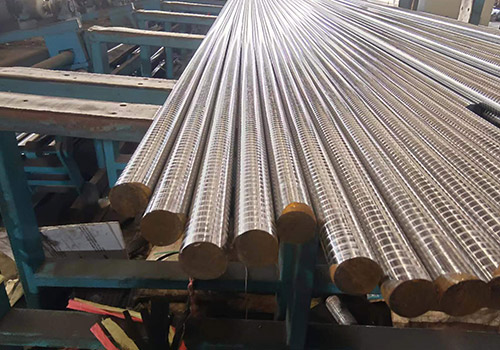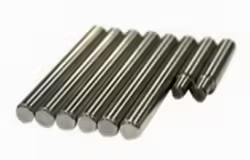
Understanding Carbon Steel Bright Bars: A Quick Guide
Introduction
Carbon steel bright bars are a crucial component in various industries, known for their exceptional strength, durability, and versatility. These bars are widely used in manufacturing, construction, automotive, and numerous other sectors where high-quality materials are essential. In this comprehensive guide, we will explore the characteristics, applications, and benefits of carbon steel bright bars, providing a thorough understanding of why they are the preferred choice for many industrial applications. Whether you are a manufacturer, engineer, or simply interested in learning more about this material, this guide will offer valuable insights into the world of carbon steel bright bars.
What Are Carbon Steel Bright Bars?

Definition and Characteristics
Carbon steel bright bars are precision-engineered bars made from carbon steel. They are called “bright bars” because of their smooth, bright finish, achieved through cold drawing, turning, or grinding processes. These bars are known for their excellent mechanical properties, including high tensile strength, good machinability, and resistance to wear and tear. The bright finish not only enhances the appearance of the bars but also improves their corrosion resistance, making them suitable for various applications.
Types of Carbon Steel Bright Bars
There are several types of carbon steel bright bars, each designed to meet specific requirements. Some of the most common types include:
- Low Carbon Steel Bright Bars: These bars contain a low percentage of carbon, typically between 0.05% and 0.25%. They are known for their excellent ductility, making them easy to form and weld.
- Medium Carbon Steel Bright Bars: With a carbon content ranging from 0.25% to 0.60%, these bars offer a good balance of strength and flexibility, making them ideal for structural applications.
- High Carbon Steel Bright Bars: Containing more than 0.60% carbon, these bars are known for their superior strength and hardness, making them suitable for heavy-duty applications where high wear resistance is required.
Each type of carbon steel bright bar offers unique properties, making them suitable for different industrial applications.
Applications of Carbon Steel Bright Bars
Manufacturing and Engineering
Carbon steel bright bars are widely used in manufacturing and engineering due to their strength, durability, and precision. Some of the common applications include:
- Machinery Parts: Carbon steel bright bars are used to manufacture various machinery parts, such as shafts, gears, and fasteners, where precision and strength are essential.
- Automotive Components: These bars are used in the production of automotive components, including axles, engine parts, and suspension systems, where high performance and reliability are crucial.
- Construction: In the construction industry, carbon steel bright bars are used for reinforcing structures, making frames, and manufacturing tools, thanks to their high tensile strength and resistance to deformation.
Construction and Infrastructure
In the construction and infrastructure sectors, carbon steel bright bars play a vital role in ensuring the durability and stability of structures. Some of the key applications include:
- Reinforcement: Carbon steel bright bars are used as reinforcement in concrete structures, providing the necessary strength to withstand heavy loads and environmental stresses.
- Framework: These bars are also used in the construction of frameworks for buildings, bridges, and other infrastructure projects, where they provide support and stability.
- Fasteners and Fittings: Carbon steel bright bars are commonly used to produce fasteners, bolts, and fittings, which are essential components in construction projects.
Automotive and Aerospace Industries
The automotive and aerospace industries rely heavily on carbon steel bright bars for the production of high-performance components. Some of the key applications include:
- Engine Components: Carbon steel bright bars are used to manufacture engine components, such as crankshafts, camshafts, and connecting rods, where high strength and durability are essential.
- Suspension Systems: These bars are also used in the production of suspension systems, providing the necessary rigidity and flexibility to ensure a smooth ride.
- Aerospace Parts: In the aerospace industry, carbon steel bright bars are used to manufacture critical components, such as landing gear, structural parts, and fasteners, where precision and reliability are paramount.
Benefits of Using Carbon Steel Bright Bars
Strength and Durability
One of the primary benefits of carbon steel bright bars is their exceptional strength and durability. These bars are designed to withstand heavy loads, high pressure, and harsh environmental conditions, making them ideal for a wide range of industrial applications. The high tensile strength of carbon steel bright bars ensures that they can handle significant stress without deforming or breaking, providing long-lasting performance in even the most demanding environments.
Precision and Machinability
Carbon steel bright bars are known for their excellent precision and machinability. The cold drawing, turning, and grinding processes used to produce these bars result in a smooth, accurate finish that is easy to machine and work with. This precision makes carbon steel bright bars ideal for applications where tight tolerances and exact specifications are required, such as in the production of machinery parts, automotive components, and engineering tools.
Corrosion Resistance
The bright finish of carbon steel bright bars enhances their corrosion resistance, making them suitable for use in environments where exposure to moisture, chemicals, and other corrosive elements is a concern. This resistance to corrosion ensures that carbon steel bright bars maintain their integrity and appearance over time, reducing the need for frequent maintenance and replacement.
Cost-Effectiveness
Carbon steel bright bars offer a cost-effective solution for many industrial applications. Their high strength and durability reduce the need for frequent replacements, while their precision and machinability minimize waste and production costs. Additionally, the versatility of carbon steel bright bars allows them to be used in a wide range of applications, reducing the need to source multiple materials for different projects.
Table: Comparison of Carbon Steel Bright Bars Types
The following table provides a comparison of the different types of carbon steel bright bars, highlighting their key properties and common applications:
| Type of Carbon Steel Bright Bar | Carbon Content (%) | Key Properties | Common Applications |
|---|---|---|---|
| Low Carbon Steel Bright Bars | 0.05% – 0.25% | High ductility, easy to form | Welding, construction, automotive parts |
| Medium Carbon Steel Bright Bars | 0.25% – 0.60% | Good strength and flexibility | Structural components, machinery parts |
| High Carbon Steel Bright Bars | >0.60% | Superior strength, high hardness | Heavy-duty tools, cutting instruments, springs |
Choosing the Right Carbon Steel Bright Bars for Your Project

Assessing Your Project Requirements
When selecting carbon steel bright bars for your project, it is essential to assess your specific requirements. Consider factors such as the expected load, environmental conditions, and the need for precision and corrosion resistance. Understanding these factors will help you choose the right type of carbon steel bright bar that meets your needs and ensures optimal performance.
Consulting with Suppliers
Working with a reputable supplier is crucial when sourcing carbon steel bright bars. A knowledgeable supplier can provide valuable insights into the different types of bars available, their properties, and their suitability for your specific application. They can also offer guidance on the best practices for handling, machining, and maintaining carbon steel bright bars to ensure long-term performance.
Balancing Cost and Quality
While cost is an important consideration, it should not be the only factor when choosing carbon steel bright bars. It is essential to balance cost with quality, ensuring that the bars you select offer the necessary strength, durability, and precision for your project. Investing in high-quality carbon steel bright bars can save you money in the long run by reducing the need for frequent replacements and repairs.
Conclusion
Carbon steel bright bars are a versatile and reliable material used in a wide range of industrial applications. Their strength, durability, precision, and corrosion resistance make them an ideal choice for manufacturing, construction, automotive, and aerospace industries. By understanding the different types of carbon steel bright bars and their properties, you can make informed decisions when selecting the right material for your project. Whether you are working on a large-scale construction project or producing intricate machinery parts, carbon steel bright bars offer the performance and reliability you need to succeed.
FAQs
What are the main uses of these steel bars?
They are commonly used in manufacturing, construction, automotive, and aerospace industries for making precision parts, structural components, and fasteners.
How do these bars differ from standard steel bars?
These bars are specially processed to have a smooth, bright finish and improved mechanical properties, making them ideal for precision applications.
What advantages do these bars offer in industrial applications?
The primary benefits include high tensile strength, excellent machinability, and resistance to wear and corrosion, which contribute to their durability and reliability.
Are these steel bars suitable for welding?
Yes, particularly those with low carbon content are well-suited for welding, though higher carbon content bars may require specific techniques.
Why are these bars considered cost-effective?
Their durability, precision, and versatility reduce the need for frequent replacements and allow for use in a wide range of applications, making them a cost-effective choice.
Can these bars be used in high-moisture environments?
While they have some resistance to corrosion due to their smooth finish, additional treatments or coatings may be needed for environments with high moisture or chemical exposure.
What factors should be considered when choosing these steel bars?
Considerations include the expected load, environmental conditions, and the need for precision and corrosion resistance to ensure the bars meet specific project requirements.
What industries benefit most from using these bars?
Industries such as automotive, aerospace, construction, and manufacturing benefit from their strength, precision, and durability.
How does carbon content affect the properties of these steel bars?
Higher carbon content generally increases hardness and strength but may reduce ductility, impacting how the bars are used in different applications.
What are the production methods for these steel bars?
They are typically produced through cold drawing, turning, or grinding, which enhances their surface finish and mechanical properties, making them suitable for precision work.






